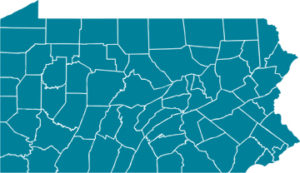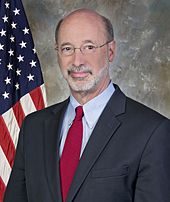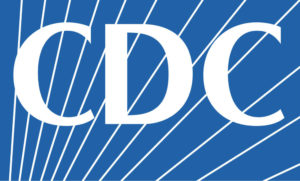COVID-19 Update: Wednesday, March 24
The following is the latest COVID-19 information from Pennsylvania’s state government as of 4:00 p.m. on Wednesday, March 24.
Department of Health
The Department of Health announced that beginning Tuesday, March 23, a week-long free drive-through COVID-19 testing site will open for the general public in Luzerne County. Go here for information about the location and hours.
 Department of Health – by the numbers
Department of Health – by the numbers
- The daily number of new COVID-19 cases has risen over the past ten days. Today’s total was the highest since February 5 and the figures in the preceding days were also higher than in the recent past.
- Despite the rising number of new COVID-19 cases the daily death totals are not rising.
- For the week from March 12 through March 18 the state’s overall COVID-19 test positivity rate was 6.5 percent, up from 5.7 percent last week.
- Five counties are now considered to be in low levels of community transmission: Cameron, Forest, Fulton, Potter, and Sullivan counties.
- 37 counties are in moderate levels of community transmission: Adams, Allegheny, Armstrong, Beaver, Bedford, Blair, Butler, Cambria, Chester, Clarion, Columbia, Crawford, Cumberland, Dauphin, Delaware, Elk, Erie, Fayette, Greene, Huntingdon, Indiana, Jefferson, Juniata, Lawrence, McKean, Mercer, Mifflin, Perry, Schuylkill, Snyder, Somerset, Tioga, Union, Venango, Warren, Washington, and Westmoreland.
- 25 counties are still in substantial levels of community transmission: Berks, Bradford, Bucks, Carbon, Centre, Clearfield, Clinton, Franklin, Lackawanna, Lancaster, Lebanon, Lehigh, Luzerne, Lycoming, Monroe, Montgomery, Montour, Northampton, Northumberland, Philadelphia, Pike, Susquehanna, Wayne, Wyoming, and York.
- The numbers of Pennsylvanians hospitalized with COVID-19, in hospital ICUs with COVID-19, and on ventilators being treated for COVID-19 have been rising for the past week.
- Currently, 21 percent of adult ICU beds in the state are unoccupied, as are 15 percent of medical/surgical beds, 10 percent of pediatric ICU beds, 25 percent of pediatric beds, and 35 percent of airborne isolation units.
- As of March 24 the state’s vaccine dashboard shows that more 1.4 million Pennsylvanians have received their first dose of a COVID-19 vaccine and nearly 1.6 million have received both doses of a vaccine. These numbers do not include Philadelphia, which operates its own COVID-19 vaccination program.
- The vaccine dashboard shows vaccine totals by county.
- Philadelphia’s Department of Public Health reports that as of March 24, 638,000 doses of COVID-19 vaccine have been administered in the city: 464,000 first doses and 174,000 second doses.
Department of Human Services
 Teresa Miller has resigned as DHS Secretary effective April 30. Governor Wolf has nominated Meg Snead, currently his Secretary of Policy and Planning, to replace her.
Teresa Miller has resigned as DHS Secretary effective April 30. Governor Wolf has nominated Meg Snead, currently his Secretary of Policy and Planning, to replace her.
DHS has issued a Medical Assistance Bulletin informing providers that effective June 1, 2021, it will reinstate provider revalidation requirements as applicable prior to the COVID-19 public health emergency. See the DHS announcement here.
Department of State
The Department of State has again expanded its list of health care professionals who may administer COVID-19 vaccines under appropriate supervision.
General Assembly
- House Bill 649 was unanimously passed by the House this afternoon. This legislation requires the Department of Health, in consultation with the Department of Human Services, to establish protocols to permit an essential caregiver to provide in-person physical and emotional support to a congregate care facility resident during a declaration of disaster emergency. The provisions of the bill are applicable beginning 15 days after a declaration of disaster emergency is issued and remain in effect until 60 days after the declaration is terminated. The bill will now be sent to the Senate for consideration.
- House Bill 63 was also passed by the House this afternoon. This legislation permits an individual who has been authorized to administer a COVID-19 vaccine by the U.S. Department of Health and Human Services to administer vaccines in Pennsylvania. It also requires the Department of Health to publish specific county-level COVID-19 vaccine data, including vaccine dose allocations and eligible populations, and a description of the Department’s COVID-19 vaccine allocation formula to the Department’s website. Lastly, this legislation requires, in certain counties, the Department of Health to deliver doses of COVID-19 vaccine that are intended for a mass vaccination site to the county health department in which the mass vaccination site is to be held. The bill will now be sent to the Senate for consideration.
 Around the State
Around the State
- The Allegheny County council postponed its public meeting this week “due to a covid outbreak amongst council members and staff,” according to the Pittsburgh Post-Gazette.
- Philadelphia will cancel appointments for as many as 30,000 COVID-19 vaccines scheduled to be administered at its FEMA mass vaccination site in the next three weeks after it discovered that they were scheduled by people improperly using the program’s digital appointment system – a problem the city previously identified and thought it had fixed. The Philadelphia Inquirer tells the story.
- Where are the new COVID-19 hot spots in Pennsylvania? The Philadelphia Inquirer offers the details and a map.
- According to Philly Voice, “Because Philadelphia is seeing a steady increase in new cases of COVID-19 – and, recently, an uptick in hospitalizations – city officials said Tuesday they will not be further relaxing COVID-19 restrictions on restaurants and large outdoor events when the rest of Pennsylvania does so in less than two weeks.” Go here for further details.
- The state will establish mass vaccination sites in two of the four suburban counties surrounding Philadelphia. The Philadelphia Inquirer explains that it will be doing so over the objections of the leaders of Bucks, Chester, Delaware, and Montgomery counties.
Resources to Consult
Pennsylvania Department of Human Services
Pennsylvania Department of Health
Centers for Disease Control and Prevention
 As a result, Pennsylvania has added nearly 400,000 people to its Medicaid rolls in the past year. Today, 3.2 million Pennsylvanians are enrolled in the state’s program, although among them are approximately 250,000 who would have been dropped from the program except for a federal requirement that the state not drop people from the program in exchange for a major increase in federal aid for the state’s program.
As a result, Pennsylvania has added nearly 400,000 people to its Medicaid rolls in the past year. Today, 3.2 million Pennsylvanians are enrolled in the state’s program, although among them are approximately 250,000 who would have been dropped from the program except for a federal requirement that the state not drop people from the program in exchange for a major increase in federal aid for the state’s program. The report includes recommendations for:
The report includes recommendations for: The Department of Health has
The Department of Health has  The number of new COVID-19 cases has fallen significantly since November and December but the decline has ended and the daily numbers now generally are higher than they have been in recent weeks.
The number of new COVID-19 cases has fallen significantly since November and December but the decline has ended and the daily numbers now generally are higher than they have been in recent weeks. According to a DHS news release, the RAHCs will “…lead efforts to address social determinants of health, reduce health disparities, and promote equity and value in health care” as part of “…a partnership between the Wolf Administration, Medicaid managed care organizations, hospitals and health systems, and community-based health and social service providers and organizations.”
According to a DHS news release, the RAHCs will “…lead efforts to address social determinants of health, reduce health disparities, and promote equity and value in health care” as part of “…a partnership between the Wolf Administration, Medicaid managed care organizations, hospitals and health systems, and community-based health and social service providers and organizations.” The moratorium on the two percent sequestration of Medicare payments could be extended under a bill the U.S. House of Representatives may consider this week.
The moratorium on the two percent sequestration of Medicare payments could be extended under a bill the U.S. House of Representatives may consider this week. SNAP has urged Congress to extend the Medicare sequestration delay on a number of occasions, doing so most recently in this
SNAP has urged Congress to extend the Medicare sequestration delay on a number of occasions, doing so most recently in this  Acting Secretary of Health Beam issued an order making March 31 the date by which all vaccine providers should have Phase 1A-eligible Pennsylvanians’ vaccine appointments scheduled. See
Acting Secretary of Health Beam issued an order making March 31 the date by which all vaccine providers should have Phase 1A-eligible Pennsylvanians’ vaccine appointments scheduled. See  Centers for Medicare & Medicaid Services
Centers for Medicare & Medicaid Services Centers for Disease Control and Prevention
Centers for Disease Control and Prevention Governor Tom Wolf and the COVID-19 Vaccine Task Force announced that Pennsylvania will use the Johnson & Johnson (Janssen) single-dose COVID-19 vaccine to vaccinate teachers and school staff members. Learn more from
Governor Tom Wolf and the COVID-19 Vaccine Task Force announced that Pennsylvania will use the Johnson & Johnson (Janssen) single-dose COVID-19 vaccine to vaccinate teachers and school staff members. Learn more from